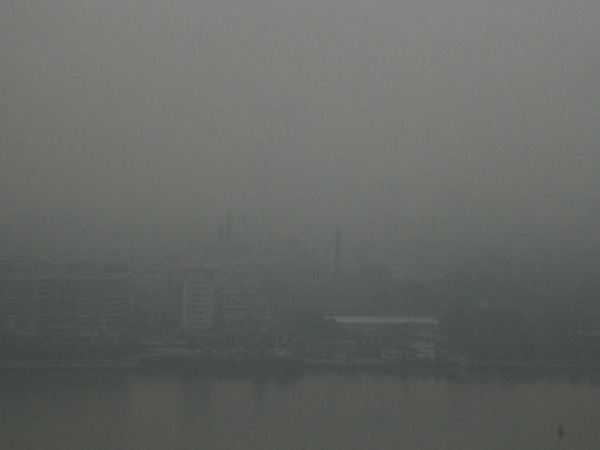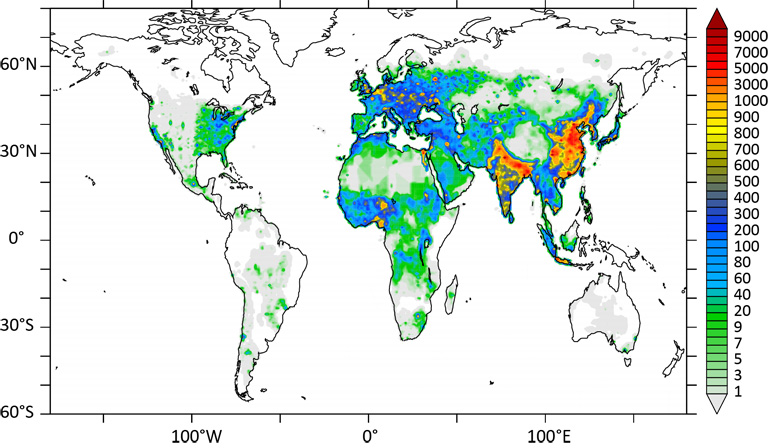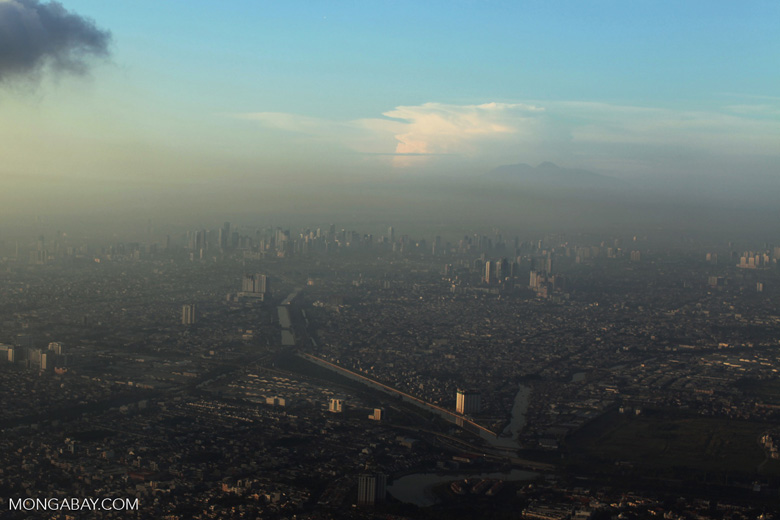- Research suggests that exposure to air pollution kills more than 3 million people prematurely, especially in South and East Asia.
- Residential stoves and furnaces burning coal and biomass produce most of the pollutants in Asia.
- If “business-as-usual” emissions continue, deaths could double by 2050.
Pedestrians and bicyclists in Asian metropolises like Beijing, Delhi or Jakarta often wear face masks as shields against the smog and polluted haze engulfing them. But they risk more than an occasional fit of coughing. About 3.3 million people die each year from exposure to air pollution, and this global death toll could double by 2050, scientists reported recently in Nature. Residential stoves and furnaces in Asian countries top the list of air pollution sources, they found.
Doctors and public health experts have associated air pollution exposure with sometimes fatal respiratory illnesses, heart disease, and lung cancer. Now, an international team of researchers studying air pollution and health impacts combined models and observations to assess and examine premature deaths from global pollution sources that are hard to rein in, from household cooking and heating to farming and raising livestock.
The team explored the regional distribution of different air pollution sources, including the usual suspects, such as industry, auto traffic and power plants. “Today, most of the hot spots in the world are in Asia,” especially China, India, Pakistan, Bangladesh, and Indonesia,” said lead author Jos Lelieveld of the Max Planck Institute for Chemistry in Mainz, Germany.

The links between pollution types and deaths exposed one new pattern. “I was surprised that residential energy use is the main source of premature mortality related to air pollution,” Lelieveld said. Communities in East and South Asia drive this trend, while other pollution sources affect the eastern U.S. and parts of Europe.
Lelieveld and his colleagues combined atmospheric models with satellite images and data from remote sensors on the ground. They mapped out concentrations of fine particles such as dust and soot that create the most harmful pollution, since they burrow deeply into lungs.
The model forecasts how each source contributes to these emissions. Using statistical trends, they then estimated the deaths caused by each one.


The scientists also projected decades into the future. If emissions continue to worsen in a “business-as-usual” scenario, then 6.6 million people may die annually from air pollution exposure by 2050, twice the current toll.
East and South Asian countries, especially China, the Indian subcontinent, and Indonesia drive these trends, the study notes. Most of their pollution comes from residential energy sources, such as heating and cooking fires.
But the rest of the world is not immune. Agricultural sources produce more pollution in Russia and Ukraine; natural sources such as windblown desert dust pollute Nigeria and Egypt; and traffic and fossil fuel-fired power plants foul the air in Germany and the eastern U.S.
The data clearly show that air pollution spreads between rural areas and major cities, the scientists reported. “[The pollution] you have today was produced upwind somewhere else yesterday,” said Lelieveld. “It is important for legislators to understand that the atmosphere is a rapidly flowing fluid.”

Public health and political officials have taken note. “EPA will consider this study, alongside many others, in the ongoing review of the national ambient air quality standards for particulate matter,” a spokesperson for the U.S. Environmental Protection Agency told Mongabay via email.
The study emphasizes the urgency of transitioning to less polluting energy sources and to electricity instead of home fires, said Michael Jerrett, Department of Environmental Health Sciences chair at UCLA and author of a response to Lelieveld’s study: “This points to a major policy failure, since we have the solutions in hand.”

Citations:
Lelieveld, J. S. Evans, M. Fnais, D. Giannadaki & A. Pozzer (2015). “The contribution of outdoor air pollution sources to premature mortality on a global scale.” Nature, 525, 367-371.
Jerrett (2015). “The death toll from air-pollution sources.” Nature, 525, 330-331.
Ramin Skibba is a graduate student in the Science Communication Program at the University of California, Santa Cruz. Other Mongabay stories produced by UCSC students can be found here